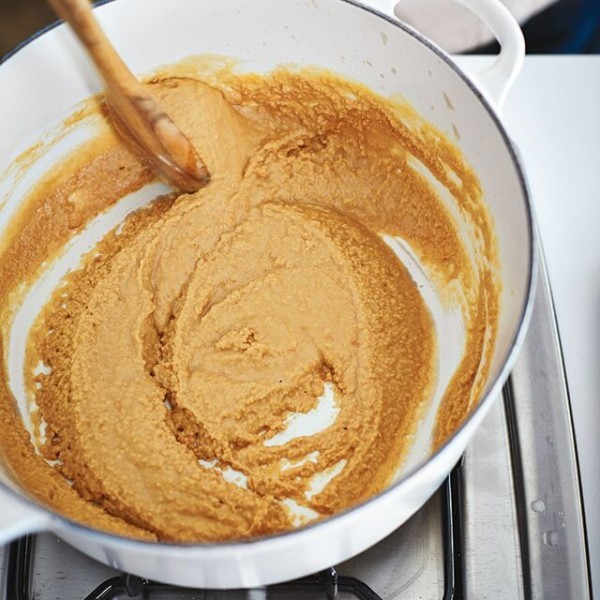Avoid these roux mistakes
February 10, 2019 by DarcieRoux is the backbone of many sauces, soups, gravies, and stews from bechamel to gumbo. Although its components couldn’t be simpler – just fat and flour – there are many ways that roux can go all wrong. If you have had some roux disasters (I know I have), brush up on your technique with Food & Wine’s tips for making the best roux.

First things first – make sure you measure your fat and flour. If the ratio is off, you won’t have enough thickening power or your gravy will be like Jell-O. While different types of recipes have slight adjustments, the standard ratio is one to one fat and flour.
Another common error people make with roux is not properly matching the heat of the roux with the heat of the liquid. If you add cold roux to a cold liquid it won’t dissolve, but if you add a hot liquid to a hot roux, you are all but guaranteed to get lumps. According to the article, you should “either cool the roux down and then add it to simmering liquid, or add cold liquid to the hot roux you just made.” If timing is an issue, you can make roux ahead of time and keep it in the refrigerator or freeze. The article contains more useful tips to help you avoid a rueful outcome with your roux.
Photo of Making a roux from Essential Emeril by Emeril Lagasse
Categories
- All Posts (6940)
- Antipasto (2135)
- Author Articles (247)
- Book News (935)
- Cookbook Giveaways (983)
- Cookbook Lovers (257)
- Cooking Tips (109)
- Culinary News (299)
- Food Biz People (552)
- Food Online (791)
- Holidays & Celebrations (272)
- New Cookbooks (149)
- Recipes (1500)
- Shelf Life With Susie (231)
- What's New on EYB (133)
Archives
Latest Comments
- Pamsy on What foods do you look forward to the most for each season?
- Pamsy on How cookbooks can help build resilience
- DarcyVaughn on Danube Cookbook Review and Giveaway
- hettar7 on JoyFull – Cookbook Review & Giveaway
- eliza on What foods do you look forward to the most for each season?
- kmwyman on Rooza by Nadiya Hussain – Cookbook Review and Giveaway
- Maryd8822 on The Golden Wok – Cookbook Giveaway
- Dendav on Danube Cookbook Review and Giveaway
- sanfrannative on Rooza by Nadiya Hussain – Cookbook Review and Giveaway
- darty on Danube Cookbook Review and Giveaway